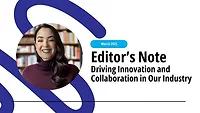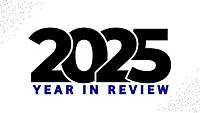Digital Transformation in Restoration: Overcoming Roadblocks and Achieving ROI
Unlocking ROI Through Smart Technology Adoption with Jenny Benbrook

Photo courtesy Jenny Benbrook; image design by R&R Art Dept.
In our industry, speed, precision and coordination are crucial, especially when we are utilizing the technology at hand to streamline our operations and boost our profitability. However, the path to success can be filled with challenges that range from implementation hurdles to your team resisting. In this Q&A with Jenny Benbrook, Restoration Industry Expert and Founder/CEO of Powerhouse Consulting Group, shares her insights on how restoration companies can overcome these obstacles, strategic planning, underutilizing Field Service Management (FSM) software and how to drive ROI through proper adoption of technology.
Kayla: Many restoration contractors are hesitant to adapt platforms like FSM. What are the biggest roadblocks you see?
Jenny: The biggest hurdle is the "failure to plan, plan to fail" mentality. Contractors often underestimate the time, resources and expertise required to properly implement an FSM. They expect it to be "plug and play", but don't realize the level of customization and change management needed. The fear of the unknown stops many from moving forward. The key is having a realistic, intentional plan — whether that's dedicating internal resources or bringing in outside expertise to guide the implementation.
Kayla: Restoration companies have unique needs around insurance workflows and emergency dispatch. What digital tools or automations should they prioritize?
Jenny: The most successful tool is proper utilization of the primary FSM platform. Contractors often only use 30% of the functionality they're paying for. Customizing the FSM to fit the restoration workflow is critical, whether that's automating insurance claims or integrating with other solutions via tools like Zapier. But the foundation must be a well-implemented, fully-leveraged FSM.
Kayla: How can restoration contractors measure the real ROI of digital platforms? What specific KPIs should they track?
Jenny: The key is having trustworthy data. If your team isn't properly trained on the FSM and following consistent processes, your reporting will be inaccurate. Once that foundation is in place, focus on metrics like improved closing rates, faster claims processing and reduced administrative hours. But the ROI goes beyond just the numbers — it's about the efficiency, visibility and customer experience digital tools enable.
Kayla: What resistance from field teams or office staff can derail technology adoption? How do you get buy-in and ensure effective usage?
Jenny: Change management is critical. Field techs may see new technology as "Big Brother" watching them, while office managers are resistant to upending their established workflows. The key is explaining the "why" behind the changes and how it will benefit them — whether that's more calls per day, easier reporting or reduced training time for new hires. Gaining their trust and confidence in the process is essential for successful adoption.
Advice from Jenny:
Embrace technology. It's necessary to remain competitive in today's restoration market. But approach it with a thoughtful plan, leveraging experts if needed. Give yourself grace — technology adoption is complex, but the long-term benefits to your business and customers make it worthwhile.
Looking for a reprint of this article?
From high-res PDFs to custom plaques, order your copy today!







